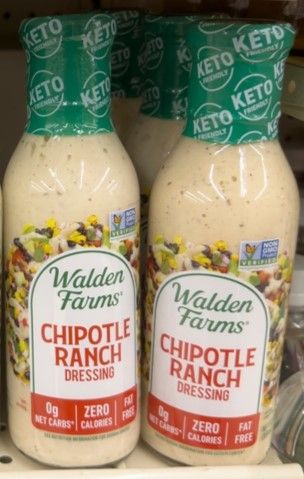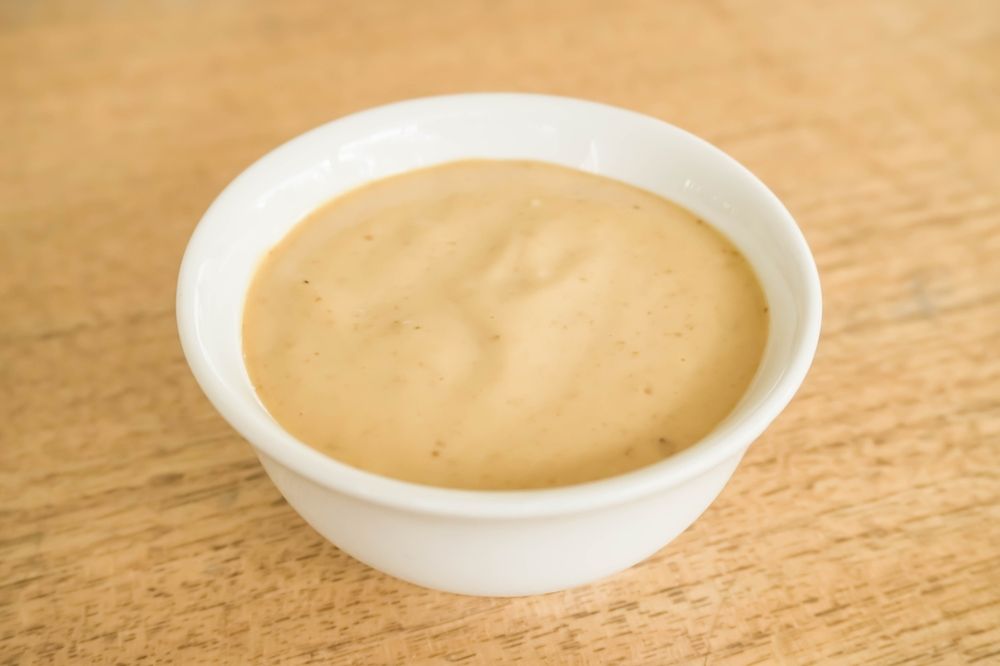While almost anything can be called a salad, those packed with leafy greens, fresh vegetables, and lean proteins offer a powerhouse of nutrition in one dish. However, the dressing you choose can make or break the healthiness of your salad. Some dressings are loaded with calories, sodium, sugar, and unhealthy fats, while others can complement your meal and keep you full and satisfied.
Choosing a nutritious salad dressing not only enhances flavor but also supports the absorption of fat-soluble vitamins like A, D, E, and K found in vegetables and greens. Leafy greens such as spinach and kale are rich in carotenoids, which the body converts into vitamin A. To maximize the absorption of these nutrients, aim to include at least 3 to 5 grams of healthy fats with your greens—a little fat can go a long way in boosting your salad's health benefits.
Unhealthy salad dressings can derail the nutritional benefits of an otherwise healthy salad by sneaking in excessive sodium, unhealthy fats, added sugars, and unnecessary calories. That’s why it’s essential to know what to watch for when browsing the grocery aisles to ensure your dressing enhances, rather than hinders, your meal.
To help you make better choices, we’ve compiled dietitian-approved insights into some of the unhealthiest salad dressings found on supermarket shelves. For more smart grocery tips, don’t miss our guide to the 6 Healthiest Potato Chips, According to Dietitians.
Methodology: How to Identify An Unhealthy Salad Dressing
When selecting salad dressings to limit or avoid, dietitians suggest paying attention to these key factors:
Types of Fat: Dressings made with olive oil or avocado oil are rich in heart-healthy monounsaturated fats, which can help reduce the risk of heart disease. On the other hand, dressings made with low-oleic or vegetable oils are high in omega-6 fatty acids, which are prone to oxidation and can lead to inflammation, explains Lara Clevenger, MSH, RDN, CPT. Saturated fats, often found in cream- or dairy-based dressings, are fine in moderation but should be limited to less than 10% of your daily value (DV) per serving.
Added Sugars: The average American consumes 17 teaspoons of added sugar daily—more than double the recommended amount. To stay within healthy limits, aim to keep added sugars to less than 10% of your daily calories (or under 50 grams per day). Even savory dressings can have hidden sugars, so always check the label.
Sodium: With a typical serving size of just two tablespoons, salad dressings can be surprisingly high in sodium. Look for options with less than 10% of your DV per serving to avoid exceeding healthy sodium levels, which are linked to increased risks of high blood pressure, heart disease, and stroke.
Calories: While a good dressing should provide satisfying energy, some can pack 180 calories or more per two-tablespoon serving. Be mindful of calorie-dense dressings to avoid unintentionally adding extra calories to your daily intake.
Marie's Chunky Blue Cheese

Nutrition (Per 2 tbsp serving):
Calories: 160
Fat: 18 g (Saturated Fat: 3.5 g)
Sodium: 170 mg
Carbs: 1 g (Fiber: 0 g, Sugar: 0 g)
Protein: 1 g
Just two tablespoons of Marie's Chunky Blue Cheese Dressing contain 3.5 grams of saturated fat, accounting for 18% of your daily value. "What makes this particularly unhealthy is its chunky texture, which makes it easy to use more than the recommended serving size," explains Amy Beney, MS, RD, CDCES. Using more than two tablespoons could quickly add up to a third of your total daily saturated fat allowance—just from the dressing on your salad!
Olive Garden's Classic Caesar Dressing

Nutrition (Per 2 tbsp serving):
Calories: 100
Fat: 10 g (Saturated Fat: 2 g)
Sodium: 340 mg
Carbs: 1 g (Fiber: 0 g, Sugar: <1 g)
Protein: 1 g
"I advise limiting the use of Olive Garden's Classic Caesar Dressing, as the calories, fat, and sodium can quickly add up," says Mandy Tyler, M.Ed., RD, CSSD, LD.
Each serving contains 340 milligrams of sodium, which accounts for 15% of your daily value—just from the dressing alone.
Ken's Steakhouse Buttermilk Ranch Dressing

Nutrition (Per 2 tbsp serving):
Calories: 170
Fat: 19 g (Saturated Fat: 3 g)
Sodium: 250 mg
Carbs: 1 g (Fiber: 0 g, Sugar: 1 g)
Protein: 0 g
"Ken's Steakhouse Buttermilk Ranch Dressing is primarily made with soybean oil, which is high in omega-6 fatty acids," explains Wan Na Chun, MPH, RD, CPT, of One Pot Wellness. "Consuming too many omega-6 fatty acids without balancing them with omega-3s can contribute to inflammation, which is linked to various health issues," Chun adds.
Additionally, a single serving contributes 15% of your daily value (DV) for saturated fat and 11% DV for sodium—two nutrients that should be limited to support heart health.
Walden Farms Chipotle Ranch

Nutrition (Per 2 tbsp serving):
Calories: 0
Fat: 0 g (Saturated Fat: 0 g)
Sodium: 360 mg
Carbs: 1 g (Fiber: 1 g, Sugar: 0 g)
Protein: 0 g
"Walden Farms Chipotle Ranch may tout its zero-calorie label, but it’s important to consider the potential downsides," says Jessie Hulsey, RD, LD, an Atlanta-based registered dietitian.
While the absence of calories might seem appealing, the lack of fat means your body won’t efficiently absorb fat-soluble vitamins found in greens and vegetables. Additionally, despite being calorie-free, this dressing contains 360 milligrams of sodium per serving, accounting for 15% of your daily value.
Wishbone Thousand Island Dressing

Nutrition (Per 2 tbsp serving):
Calories: 120
Fat: 11 g (Saturated Fat: 1.5 g)
Sodium: 300 mg
Carbs: 4 g (Fiber: 0 g, Sugar: 4 g)
Protein: 0 g
While the saturated fat in Wishbone Thousand Island Dressing isn’t a major concern, the four grams of added sugars and 13% of your daily recommended sodium per serving make it a less-than-ideal choice for a nutritious salad.
Ken's Steakhouse Country French with Orange Blossom Honey

Nutrition (Per 2 tbsp serving):
Calories: 140
Fat: 12 g (Saturated Fat: 2 g)
Sodium: 230 mg
Carbs: 10 g (Fiber: 0 g, Sugar: 9 g)
Protein: 0 g
Ken's Steakhouse Country French with Orange Blossom Honey lives up to its sweet name, packing 9 grams of added sugar per serving. While it stays within 10% of the daily value (DV) for both saturated fat and sodium, the added sugar accounts for a significant 18% of the recommended daily intake, making this dressing one to limit or avoid.
For a touch of natural sweetness, try adding fresh fruit to your salad instead!
Wishbone Original Western Salad Dressing

Nutrition (Per 2 tbsp serving):
Calories: 160
Fat: 12 g (Saturated Fat: 2 g)
Sodium: 250 mg
Carbs: 13 g (Fiber: 0 g, Sugar: 12 g)
Protein: 0 g
When it comes to added sugars, Wishbone Original Western Salad Dressing ranks among the worst offenders. Marketed as a "twist on traditional French dressings," a single serving contains 24% of the recommended daily limit for added sugars—all derived from high fructose corn syrup (HFCS).
Although HFCS isn’t necessarily worse for your health than regular table sugar, it should still be limited in your diet. Excessive consumption is linked to a higher risk of heart disease, diabetes, and non-alcoholic fatty liver disease. In short, this is one dressing you’re better off avoiding.
Hidden Valley Buffalo Ranch

Nutrition (Per 2 tbsp serving):
Calories: 110
Fat: 11 g (Saturated Fat: 1.5 g)
Sodium: 410 mg
Carbs: 2 g (Fiber: 0 g, Sugar: 1 g)
Protein: 0 g
Pushing the boundaries of how much sodium can fit into two tablespoons, Hidden Valley Buffalo Ranch delivers a hefty 18% of your daily recommended intake per serving. Use more than the standard two tablespoons, and that number climbs even higher, making it easy to exceed healthy sodium limits.
Brianna's Blush Wine Vinaigrette

Nutrition (Per 2 tbsp serving):
Calories: 100
Fat: 7 g (Saturated Fat: 0 g)
Sodium: 310 mg
Carbs: 11 g (Fiber: 0 g, Sugar: 9 g)
Protein: 0 g
Vinaigrettes are often considered a healthier salad dressing option due to their lower saturated fat and total fat content, as they typically have a higher proportion of vinegar compared to other dressings.
However, Brianna's Blush Wine Vinaigrette lists sugar as its first ingredient, with each serving packing 9 grams of added sugar—18% of your daily value. This makes it a less-than-healthy choice, and one worth avoiding.
Maple Grove Farms Fat-Free Honey Dijon Dressing

Maple Grove Farms Fat-Free Honey Dijon Dressing
Maple Grove Farms Fat-Free Honey Dijon Dressing might seem like a healthier choice with its low calorie count and zero grams of fat. However, while it won't contribute extra calories, it does come with a significant dose of added sugar and sodium.
Each serving contains 9 grams of added sugar and 10% of your daily value (DV) for sodium. Plus, the lack of fat means you'll miss out on the benefits of absorbing fat-soluble vitamins from your greens, leaving essential nutrients untapped.

